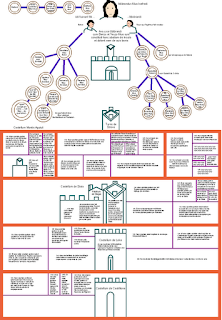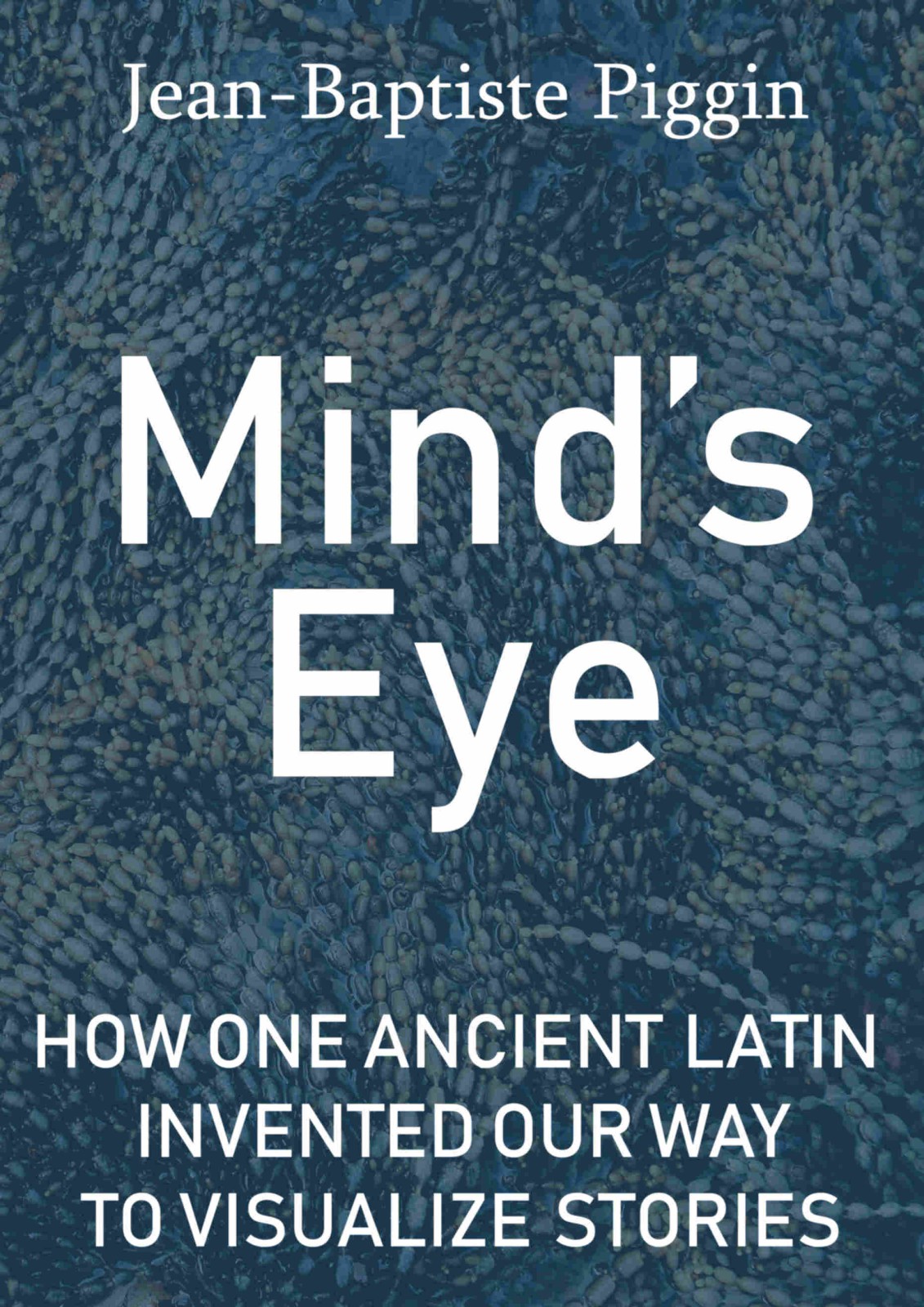In what is now the far corner of north-west France, Lambert, a canon of the city Church of Our Lady in
St Omer, completed in 1122 a richly illustrated compendium of mythical biology, history and religious knowledge. The
Liber Floridus (book of flowers) belongs to the same genre as the
Etymologies of Isidore of Seville, a compilation or
florilegium or encyclopaedia of many sorts of information, all intended to bring delight. Isidore’s use of graphics had been primitive, but Lambert was a superb and imaginative graphic designer. One celebrated full-page spread, the
Arbor Mala and Arbor Bona, is a compilation of vices and virtues. The
Liber Floridus is bursting with clever, colourful graphic ideas. Its images of imaginary plants and strange animals in the bestiary section fascinate.
Lambert could also be conservative in his design choices. In his personal, autograph manuscript of the
Liber Floridus, there is a stemma of Lambert’s maternal ancestors which goes back to his great-great-grandfather Odwin. It recalls the family names and birthdates which many British and American families wrote in the front of their family bibles in the 19th century, but Lambert decided to draw it in semi-stemmatic form, not as a simple list. As with the German imperial stemmata compiled in the previous century, Odwin is shown at the top, with the descendants splayed out below. Unlike the Great Stemma, there are no roundels. The individuals are grouped in short vertical lists of siblings. These tabulations of their forenames form family blocks. These tiny tables are connected by smooth or squiggly lines back to their parents and ultimately to Odwin. It is crowded and untidy, but it is striking that the designer of the
Arbor Bona and Arbor Mala has presented his family with a simple stemma, not a tree. It has not been inverted and is not even pretending to be a tree.
Lambert of Saint-Omer's
personal autograph copy, the original manuscript of the
Liber Floridus, is in the University Library at Ghent, Belgium (ms. 92). Saint-Omer is a border town and this unique codex seems to have been taken to Belgium during the French Revolution for safe-keeping. Recently scans of this great treasure were placed on the internet. The digital version is a bit difficult to use, with no option for full-screen viewing that I can discover. One cannot download complete pages because the server sends them in the form of tiny tiles.
The diagram appears on
folio 154r (use the navigation to go to the 30th page of results to see a zoomable version). Folio 154r has been moved to the very end of the current binding, but Albert Derolez, who has published the manuscript (
Lamberti), suggests it may have originally been at the very beginning as a front flyleaf:
The first page lacks all ruling ... Was it Lambert's intention to leave it blank? In that case the leaf or the quire should originally have been placed at the front of the codex. (Autograph Manuscript, 180)
This would explain why it was not transferred into other copies: it was not seen as part of the body of text. Christiane Klapisch-Zuber briefly discusses the diagram on pages 94-96 of her
L'Ombre des Ancêtres, and refers the reader to the editio princeps by Gysseling, whose entire discussion of the stemma in 1947 was limited to a single sentence:
C'est la seule généalogie que nous connaissons pour le moyen âge (exception faite des généalogies de vices, de vertus et de ...., qui apparaissent plus ..... ). [some words illegible in my photocopy]
Derolez rearranged the diagram into a conventional modern printed descent "tree". Klapisch-Zuber tartly remarks that Derolez's graphic version "wildly displaces the generations and ends up being a lot less intelligible than the design in the original manuscript" (note 27, page 362). This is perhaps unfair to Derolez, but I can now present what I believe is the first ever graphic version which is faithful to the original layout, and which is machine readable to boot.

It can be better studied as a
Flash page on my main website. I have followed the Derolez transcription, which as far as I know is actually the work of Gysseling. The italic letters are his readings of the scribal contractions. The dotted lines represent Lambert's squiggly lines, which I could not reproduce with OpenOffice Draw.
One oddity is that Lambert states there should be five "Heimerici" siblings but in fact shows six. There are two unidentified descendants at left (000 in my diagram) who are foreshadowed by lines but not given any names. At right is a name beginning Nor**** that was illegible. I am not sure if Drogo and Folcardus in the bottom row really are brothers: Lambert's diagram seems to suggest they are cousins. The awkward layout suggests the group at right might have been an afterthought or have been entered after much later family research, but perhaps the main design influence was a lack of space. Derolez, who seems to have found evidence that earlier script was scraped away, writes: "The lower part of the pedigree was afterwards rearranged in order to create more space for a text."
However the details of Lambert's genealogy are not the topic that interests us here, and I have left the genealogy as Gysseling and Derolez preferred it. It is the concept of the diagram that matters. It is practical, straight out of life, a little clumsy and unclear, but ultimately an intelligent presentation of 80 names in the most compact space.
I see no evidence for Klapisch-Zuber's speculation that Lambert may have been the inventor of this graphic design:
Toutes ces particularités laissent penser que Lambert a réinventé, ou interpreté de facon autonome, un type de schéma généalogique peut-être entrevue ice ou là... on est tenté de voir dans un schéma qu'il couche sur un page de son livre une invention autonome et sauve de toute influence immédiate. (L'Ombre, 96)
The more plausible view is that Lambert imitated other diagrams of "normal" families which he had seen, and that such diagrams were in relatively common use in the 12th century. Unfortunately, Lambert's is one of the few, perhaps the only surviving witness of this genre of document to remain in our archives from so early.
- Derolez, Albert. Lamberti S. Audomari Canonici Liber Floridus. Ghent: Story-Scientia, 1968.
- Derolez, Albert. The Autograph Manuscript of the Liber Floridus. Corpvs Christianorvm. Autographa Medii Aevi 4. Turnholt: Brepols, 1998.
- Gysseling, Maurits. “Les plus anciennes Généalogies de Gens du Peuple dans les Pays-Bas Méridionaux.” Bulletin de la Commission Royale de Toponymie de Dialectologie 21 (1947): 212–215.




